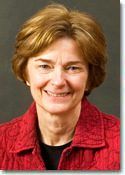 For the first time in 25 years, Read Naturally founder Candyce Ihnot has moved her reading lab to a new school. In a series of blog posts, Candyce will share “stories from the lab,” in which she describes the successes, challenges, and surprises of operating Read Naturally Live in a new setting. She’ll sprinkle each post with bits of wisdom from decades of creating Read Naturally materials and using them with the beloved students she keeps at the center of her work.
For the first time in 25 years, Read Naturally founder Candyce Ihnot has moved her reading lab to a new school. In a series of blog posts, Candyce will share “stories from the lab,” in which she describes the successes, challenges, and surprises of operating Read Naturally Live in a new setting. She’ll sprinkle each post with bits of wisdom from decades of creating Read Naturally materials and using them with the beloved students she keeps at the center of her work.
In this post, Candyce describes setting up for the first day, training the students, and finally seeing that first bit of magic when they start making progress.
"Who Signed Me Up for This?"
By Candyce Ihnot
On my first morning working with the students, I arrived early to make sure everything was ready to go. I logged into my demonstration story and made sure the projection system was working. Then, on each student computer, I plugged in a set of earphones, logged into the reading lab account, and opened the Read Live bookmark so that the Read Live login screen was showing. I made sure the Caps Lock keys were off on each computer so that the students' logins were not done in CAPS. I take care of these little things myself because I already know how to read. I want the kids reading every minute they’re in here.
As always, I suffered from first-day jitters. I had practiced my “opening remarks,” but I was still a bit nervous about how things would go. I relaxed the moment the students crossed the threshold. Here they were, six third-grade students, ready to learn something new. I was thrilled.
I began by introducing myself and the other volunteers in the lab. Right away, one skeptical little boy asked, “Who signed me up for this?” It was a good question. It was his way of asking why he was here. My most important job that day was to answer it well.
I carefully explained that the students had been selected to come to the Read Naturally lab to become good readers—not fast readers, but good readers. I explained that good readers read like they speak. When we speak, we say words accurately, at a rate others can understand, and with expression. When we speak, we also (hopefully) know what we’re talking about!
Then I explained that, in order to become good readers, we need to read a lot. So, the lab is like a reading gym—a place to “work out” as a reader.
“How do you think those great athletes do it?” I asked. “LeBron James, Michael Phelps—how did they get so good?”
Of course, the students knew the answer: Practice, practice, and more practice. Thinking about the athletes seemed to make the skeptical little boy slightly less weary of our “reading gym.” I was starting to earn his trust.
In my second group, I remembered to include Gabby Douglas in my list of athletes, and all the girls perked right up. I’ll never forget to include her again!
I used the Read Naturally Live lesson plans to introduce the program, and we were on our way. I’m happy to report that, after just one week, the students were already making progress. One little girl’s eyes got as wide as saucers when she saw her practice score of 102 words correct per minute—up from 55 on her cold timing.
These are the moments that make me bundle up each frigid morning in the Minnesota winter and trudge my heavy snow boots into the lab. The delight on their faces when they realize they can read is a kind of magic that warms me to my core.
Nobody needed to sign me up for this. There’s no place I’d rather be.
Click the link to see Candyce's first blog post, Behind the Scenes.
 Share your student’s success story—nominate him or her for our Star of the Month award. Win a Barnes & Noble gift card for the student and a Read Naturally gift certificate for your class!
Share your student’s success story—nominate him or her for our Star of the Month award. Win a Barnes & Noble gift card for the student and a Read Naturally gift certificate for your class!
I love this article! It is so important that they know it is not about being a fast reader, it's about being a good reader. We have to reinforce this concept a lot with our students!